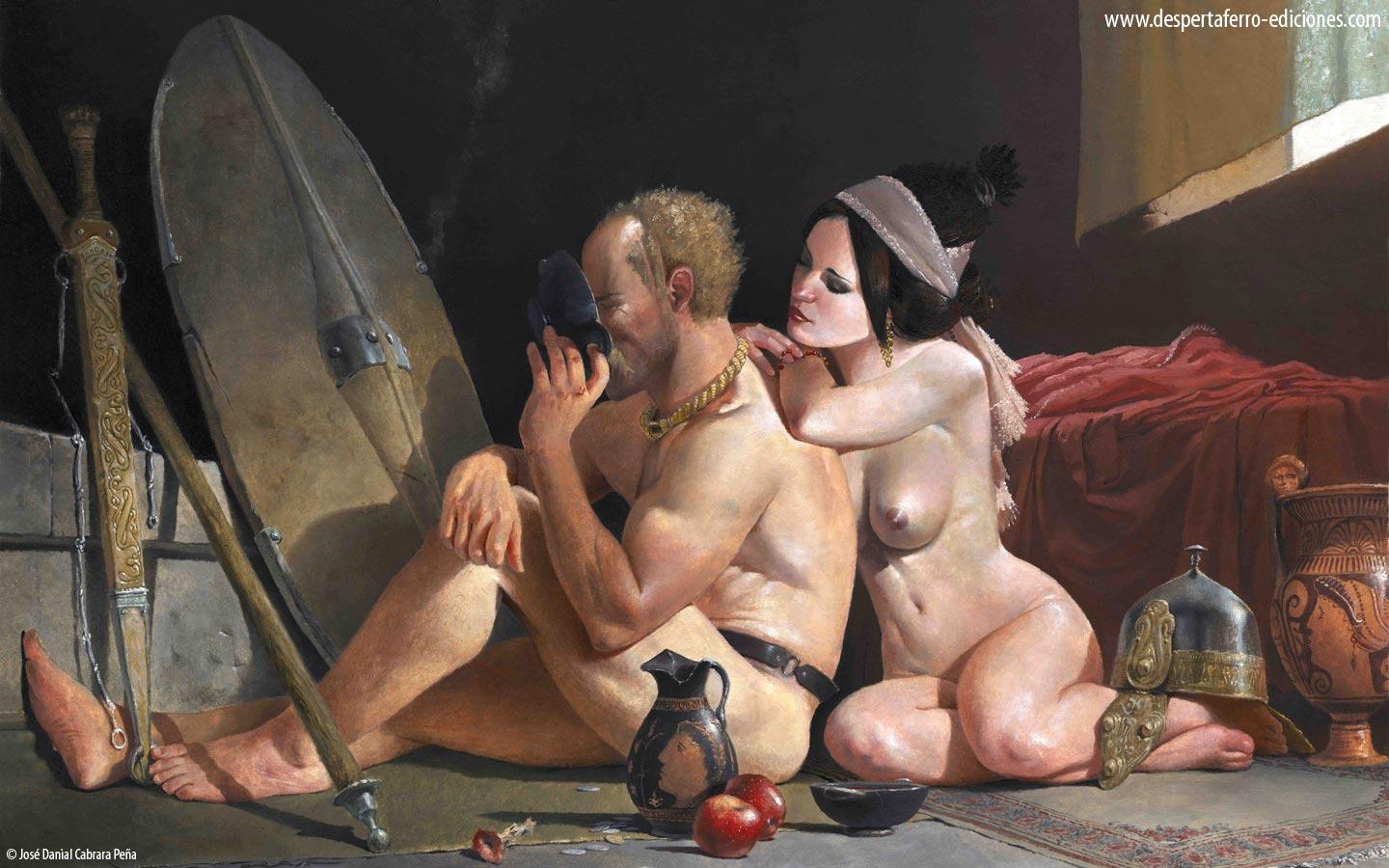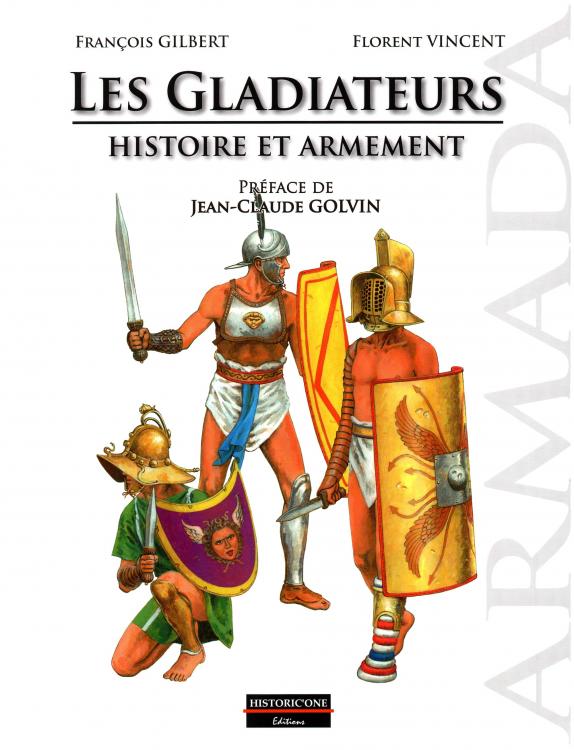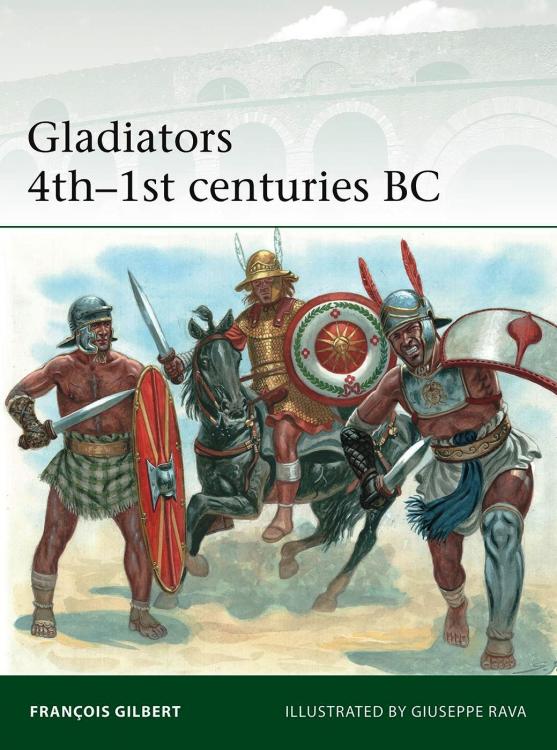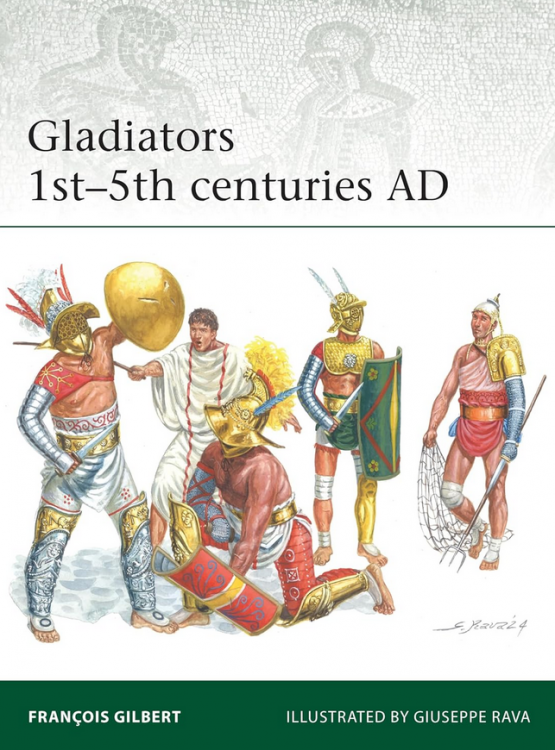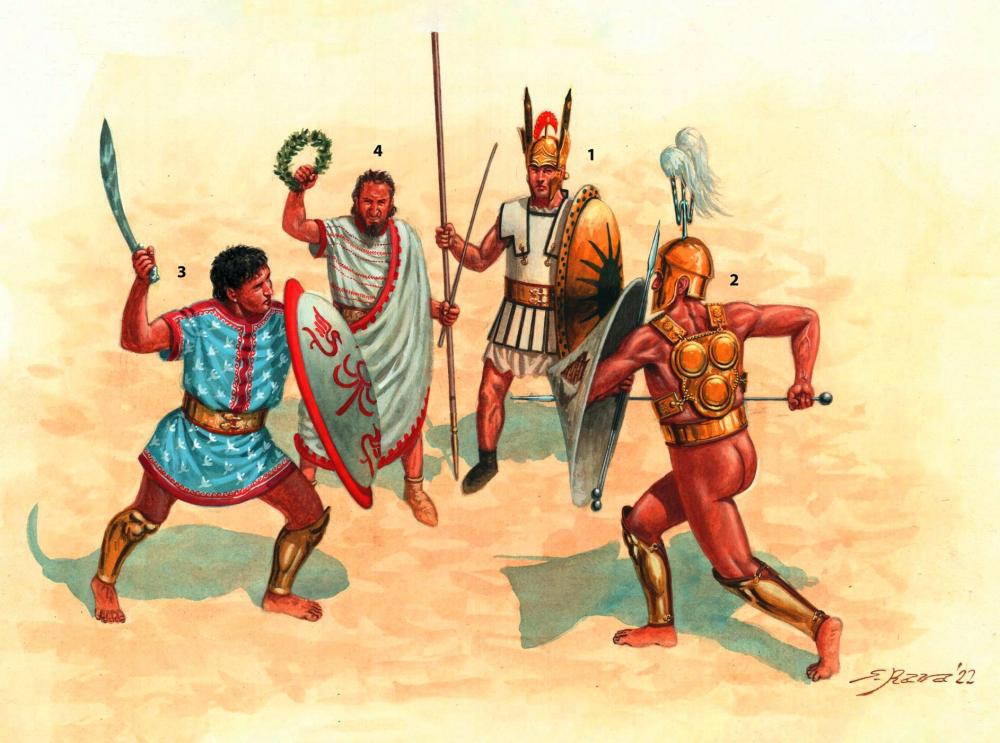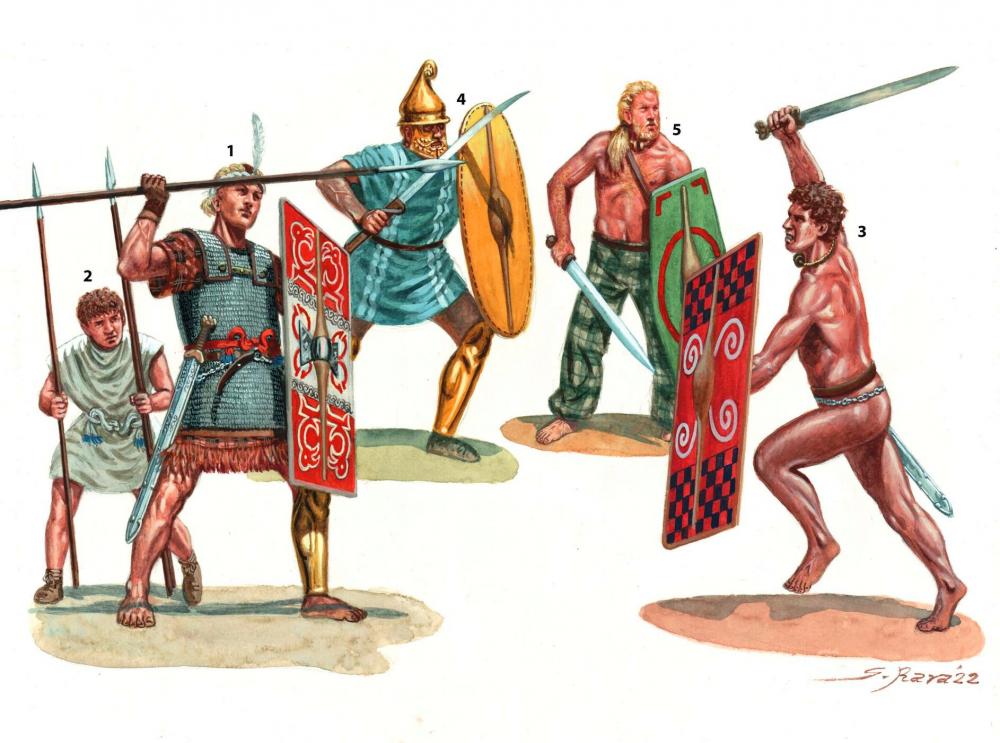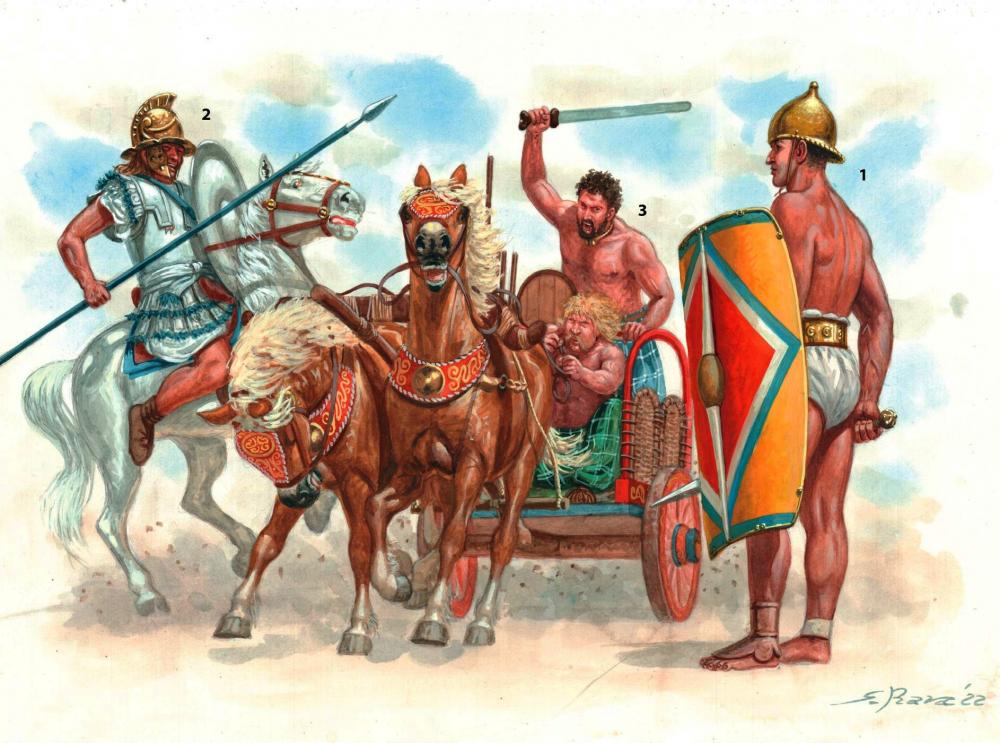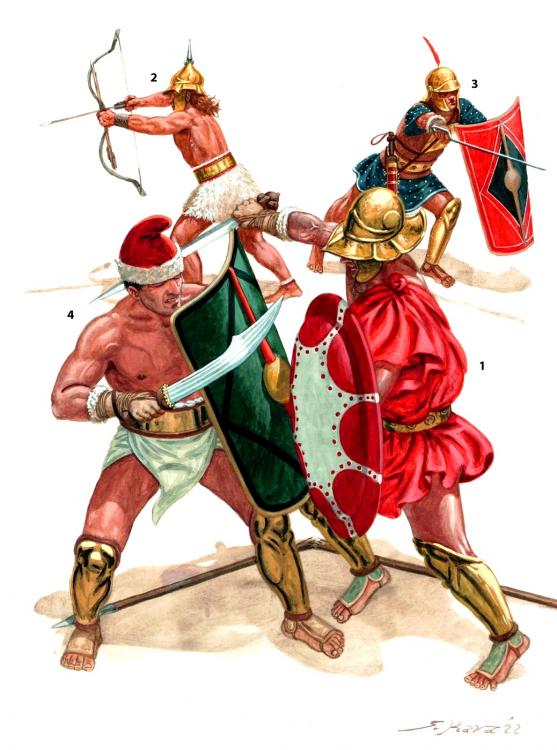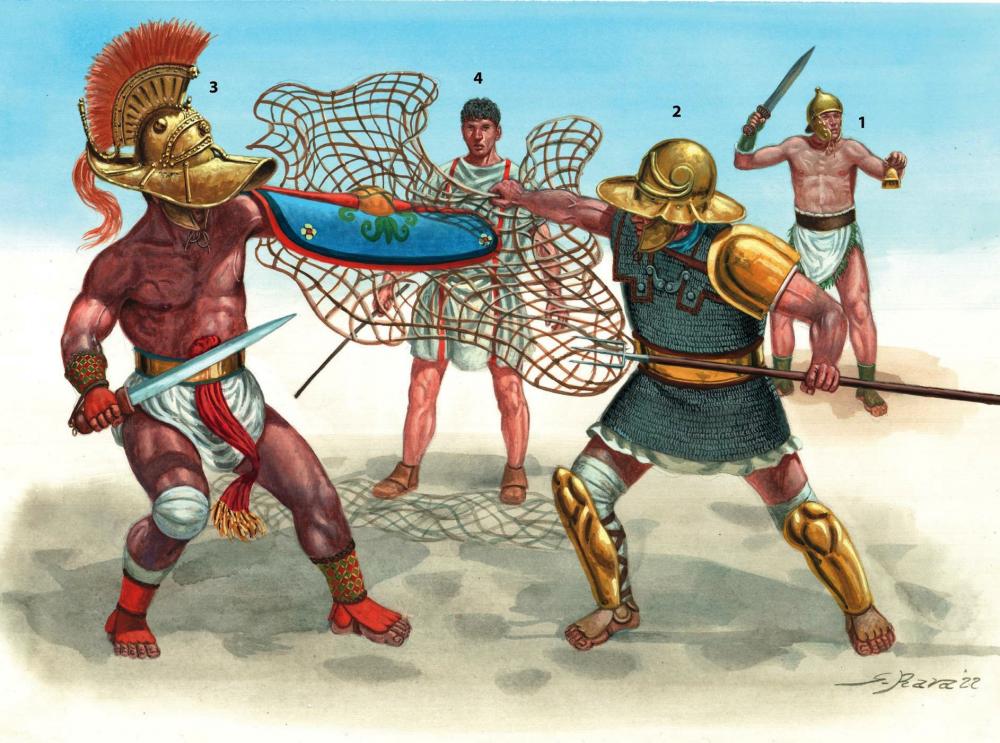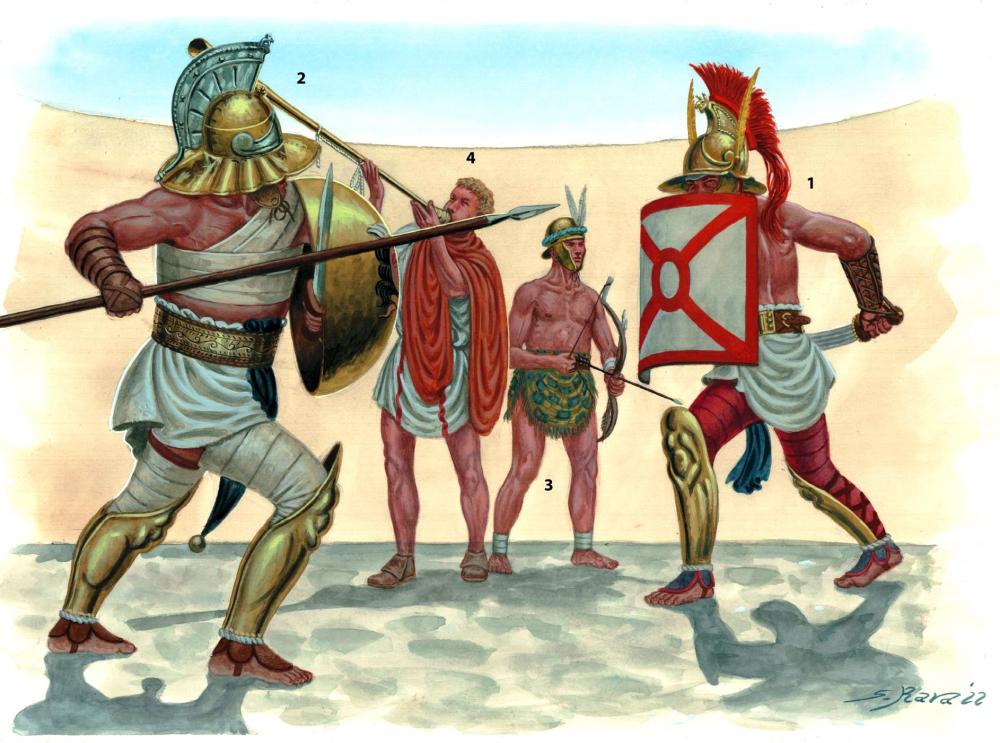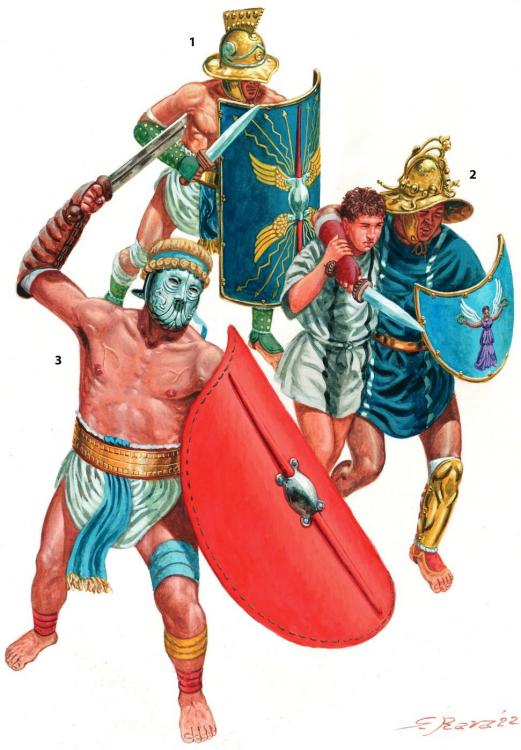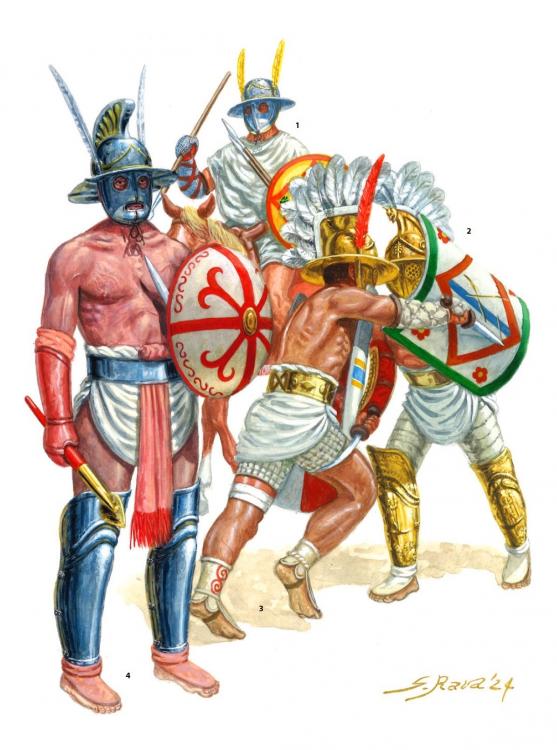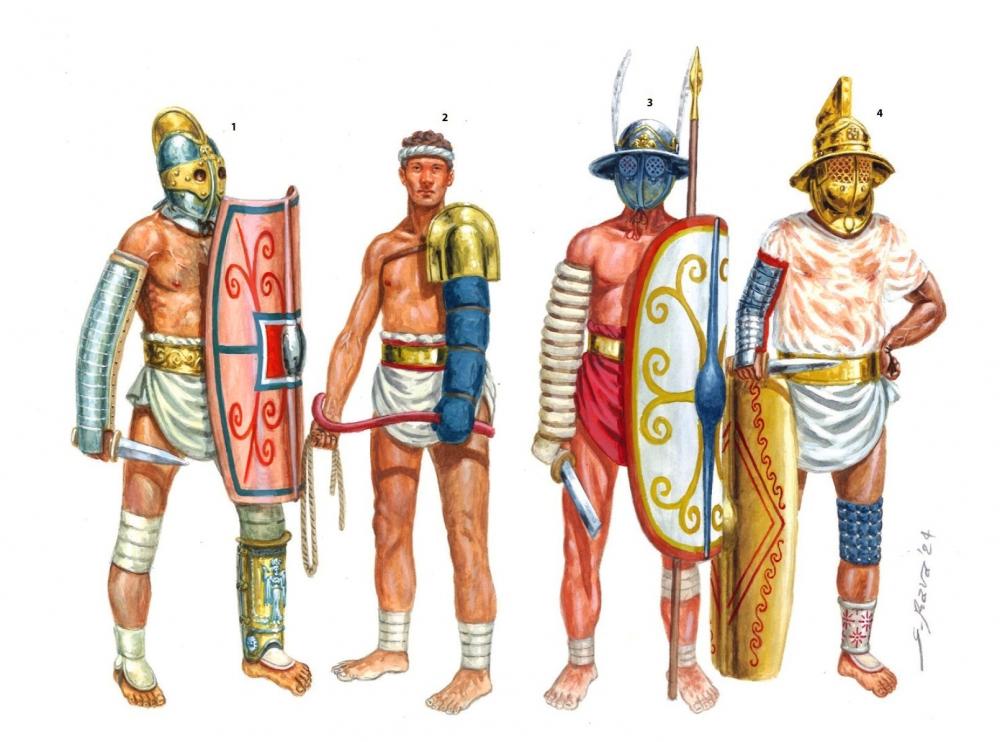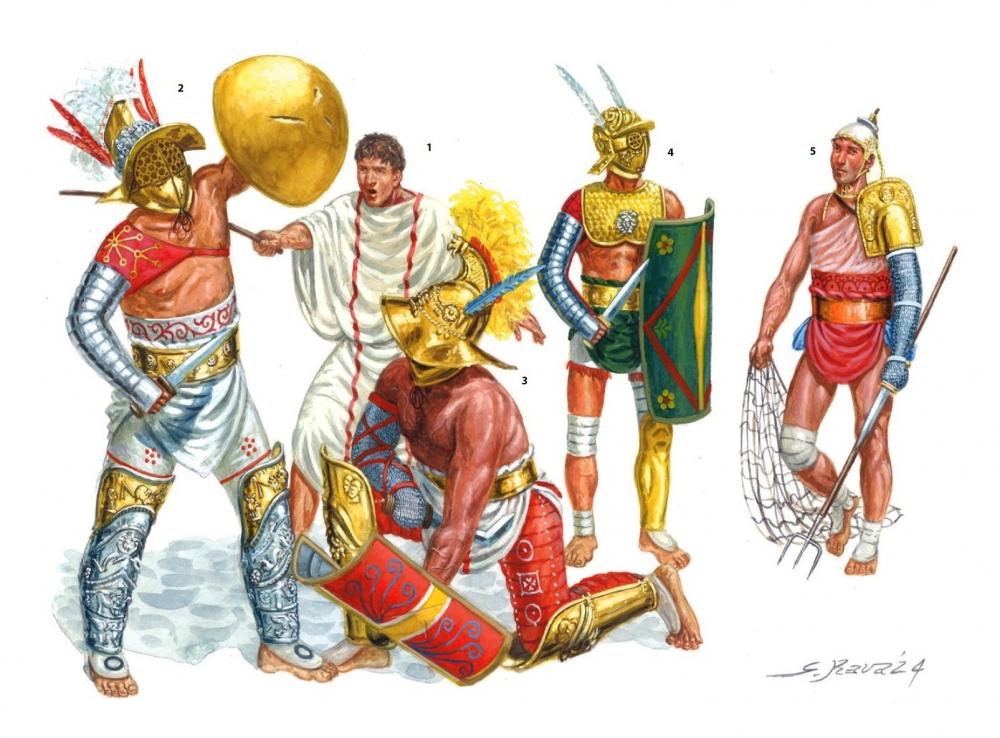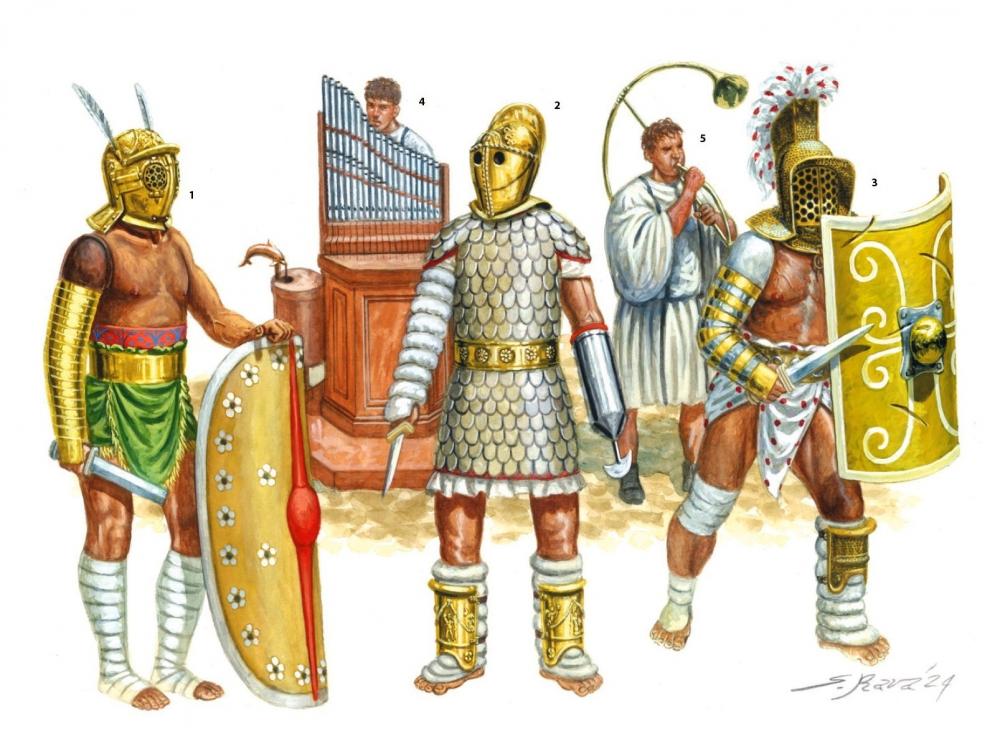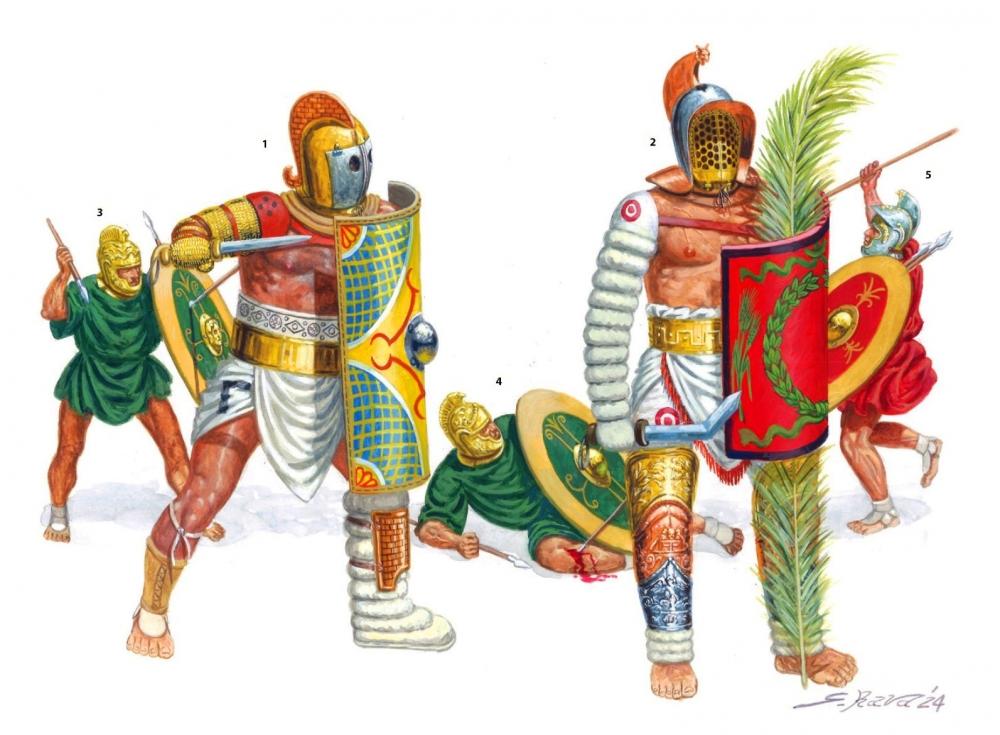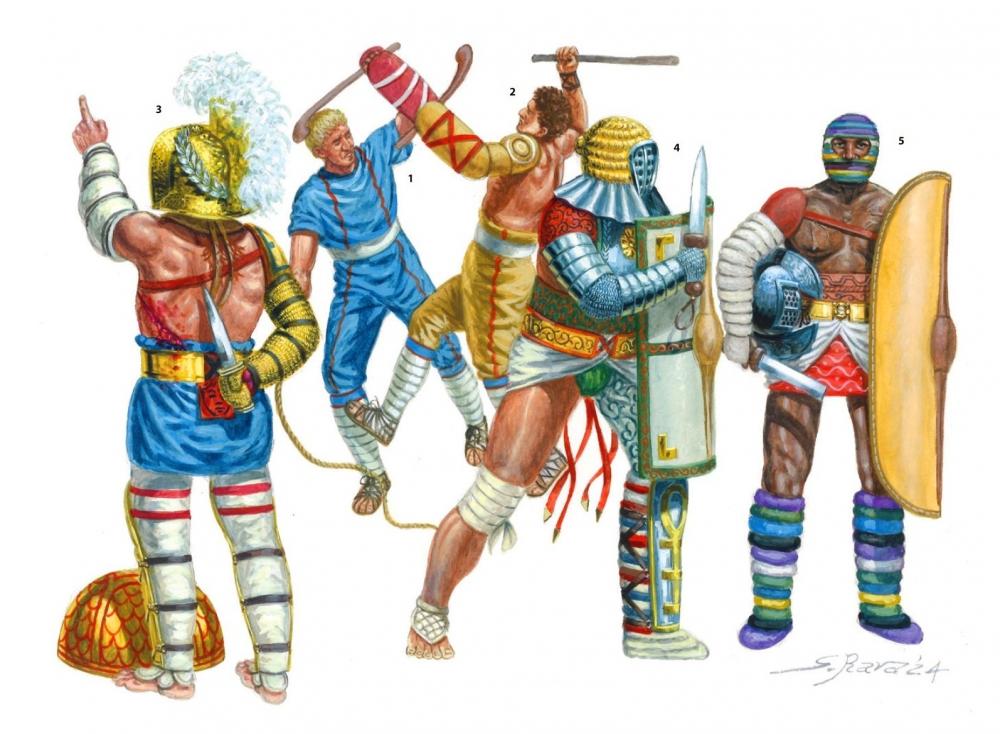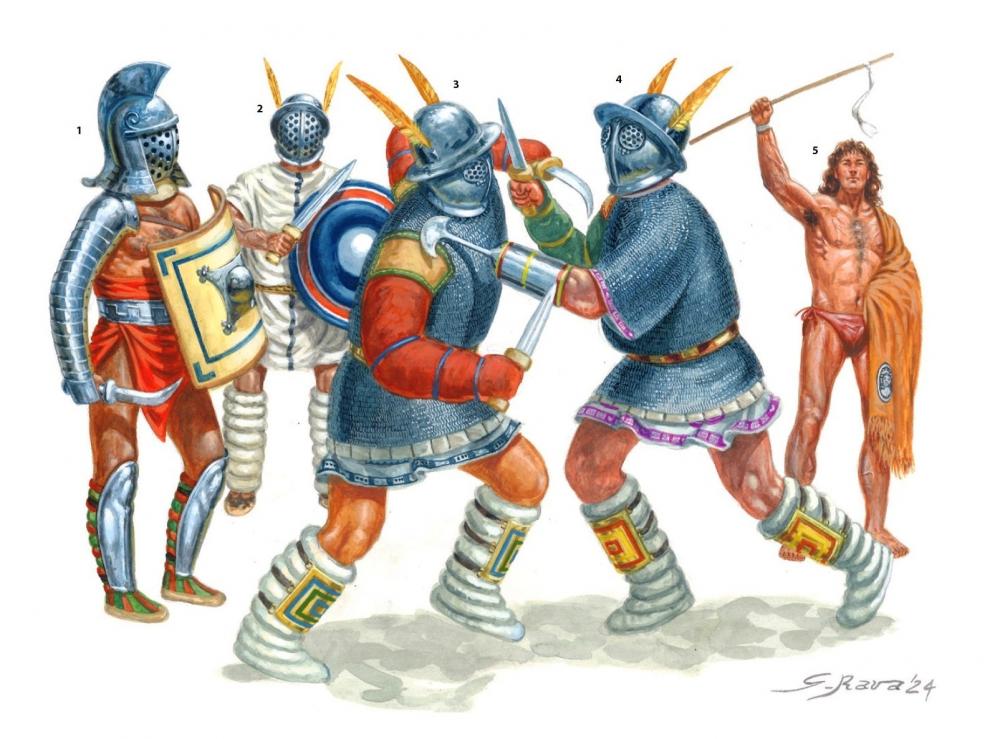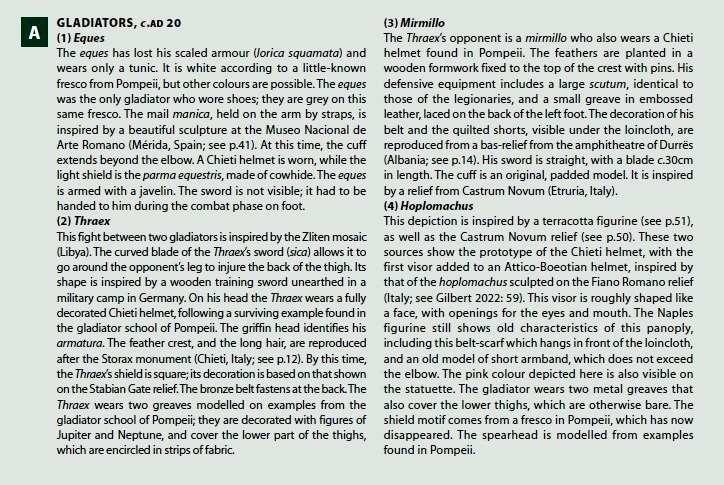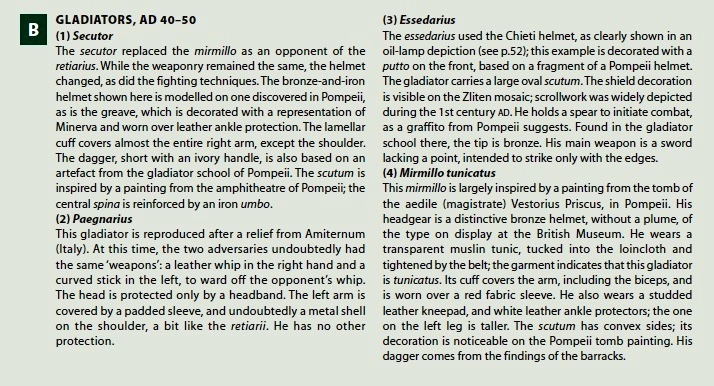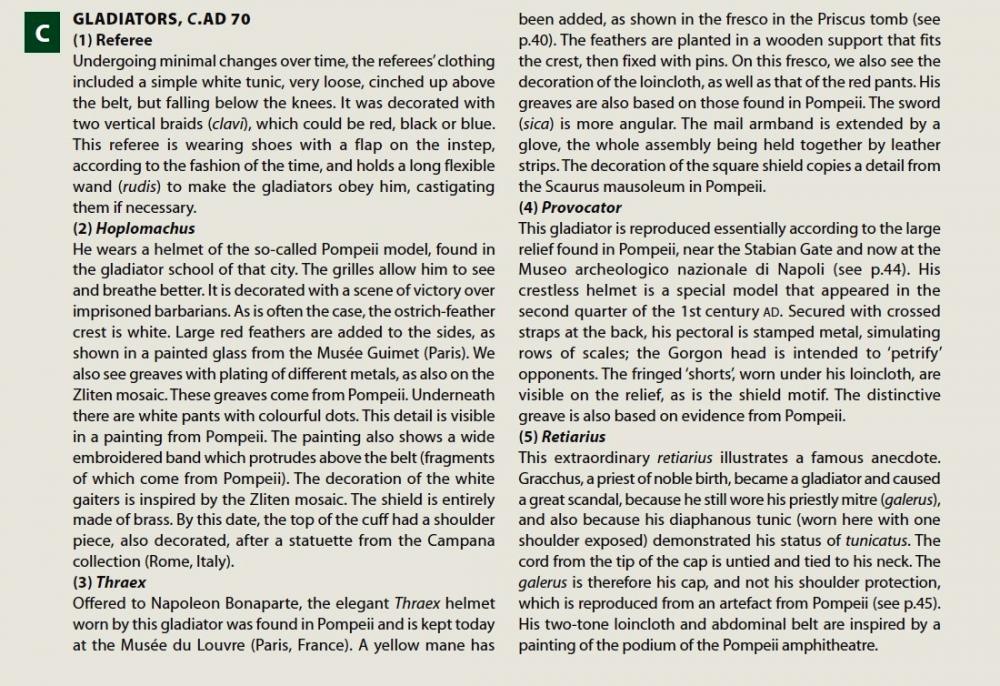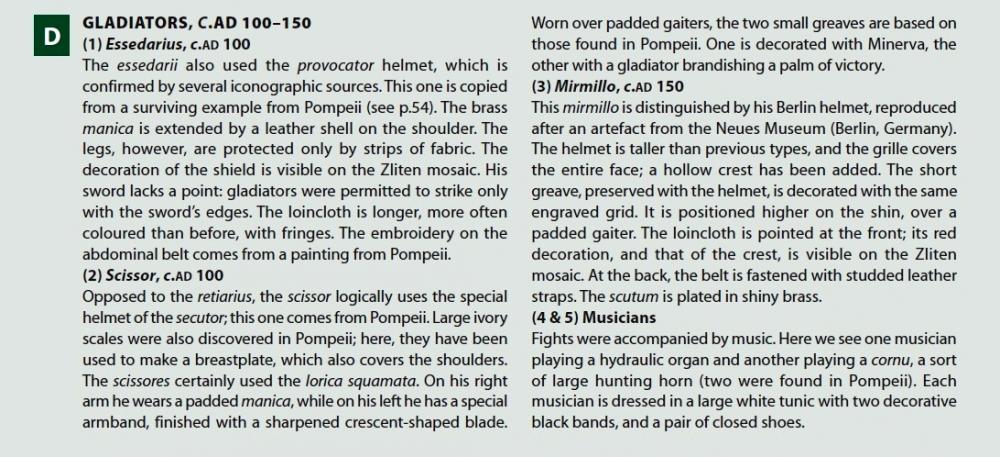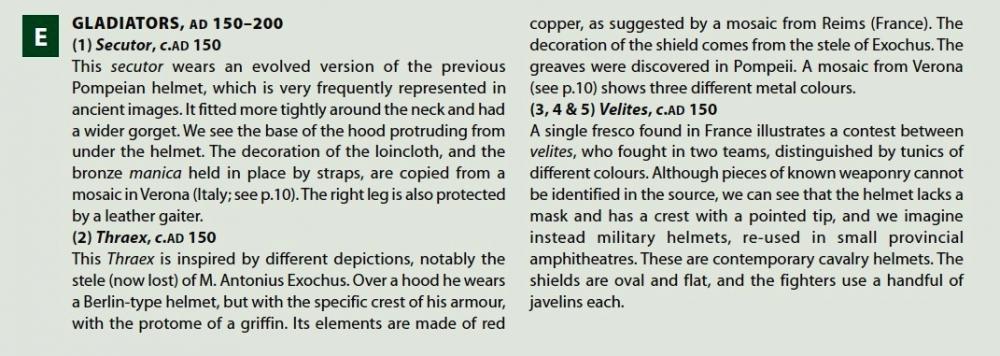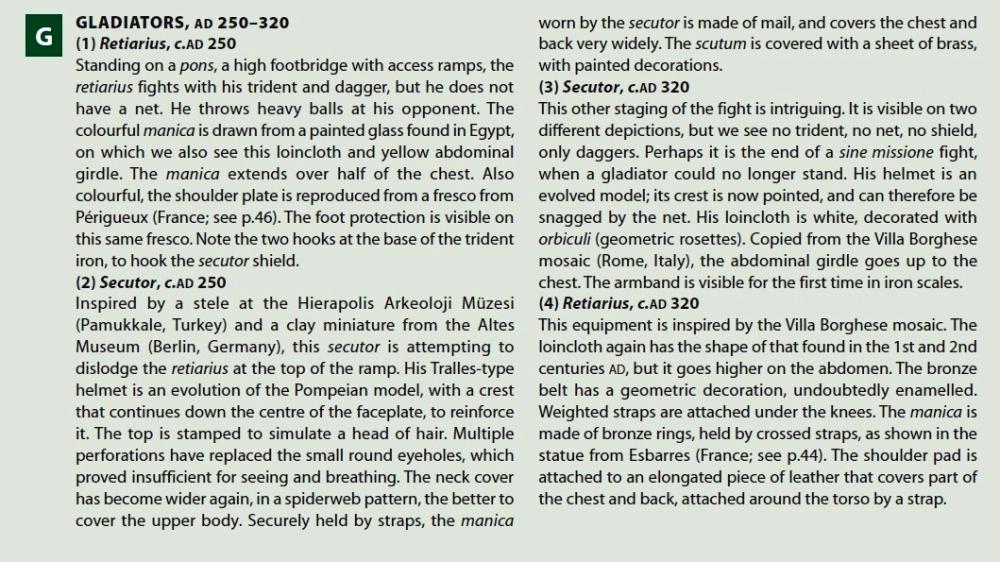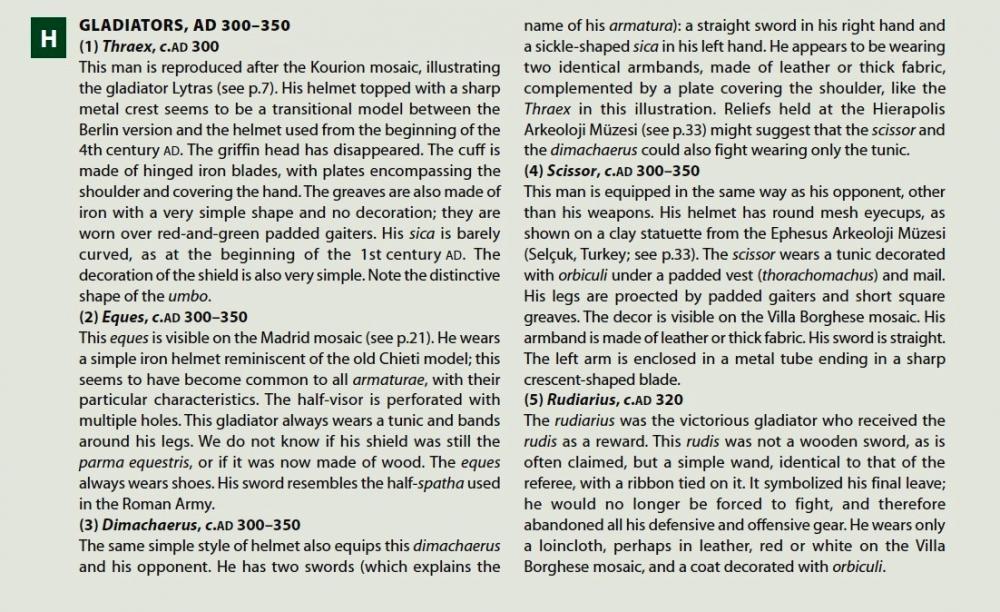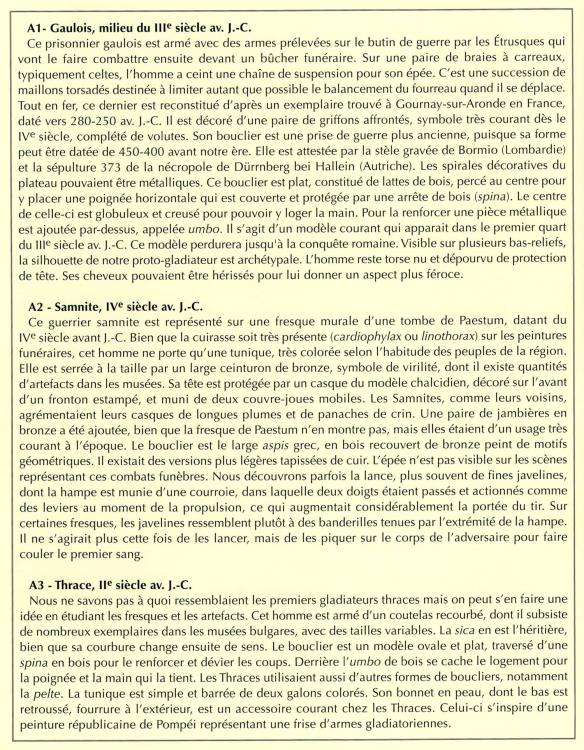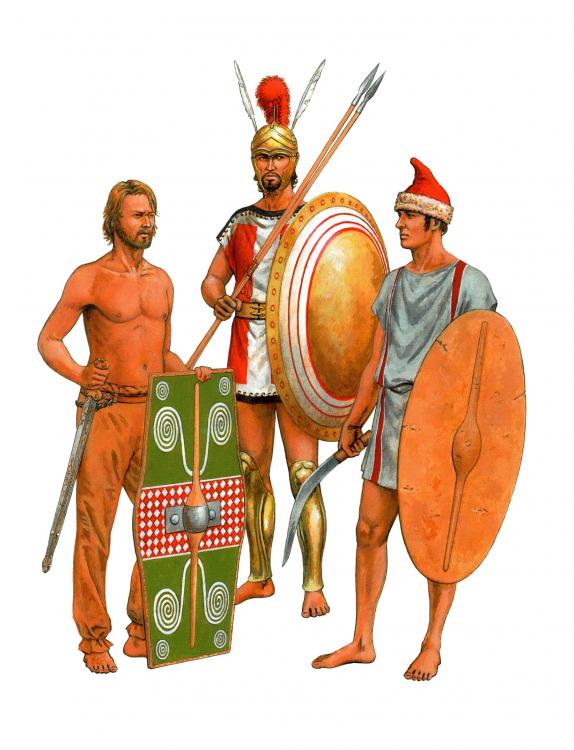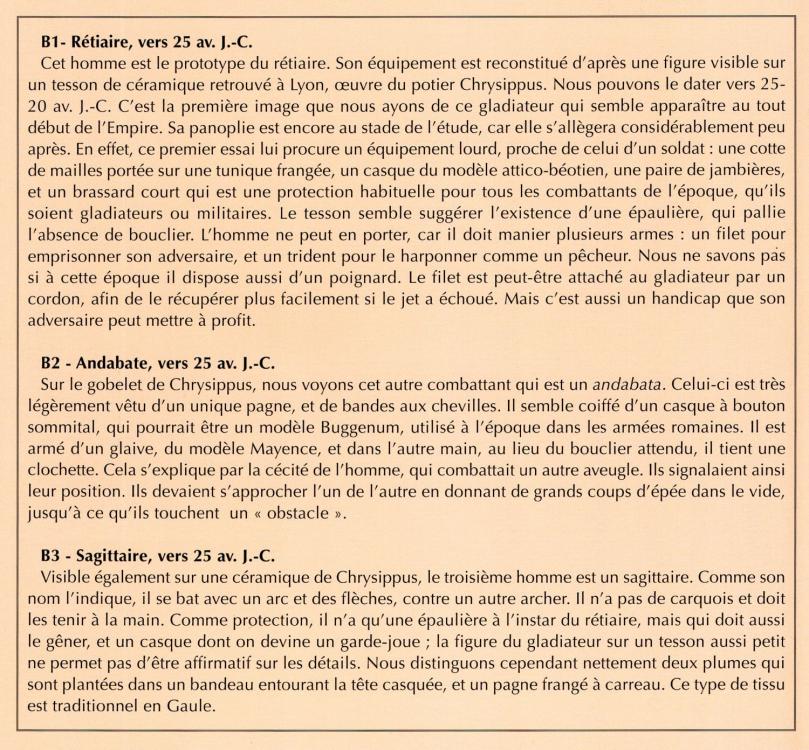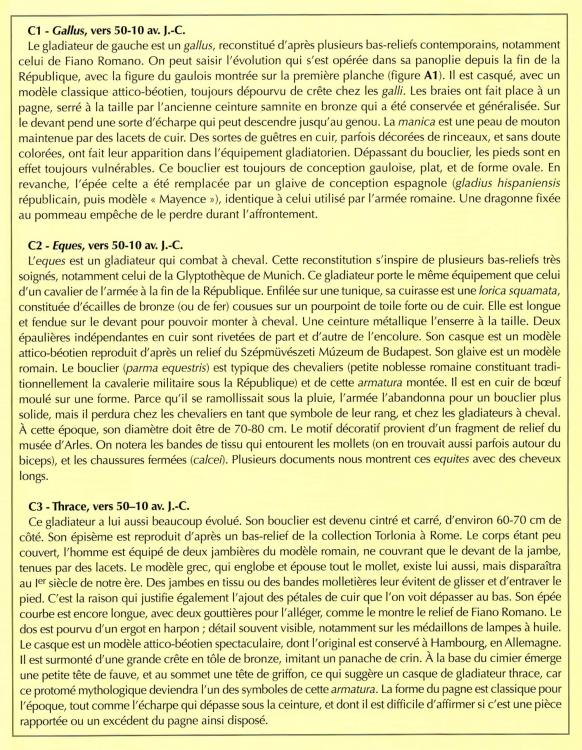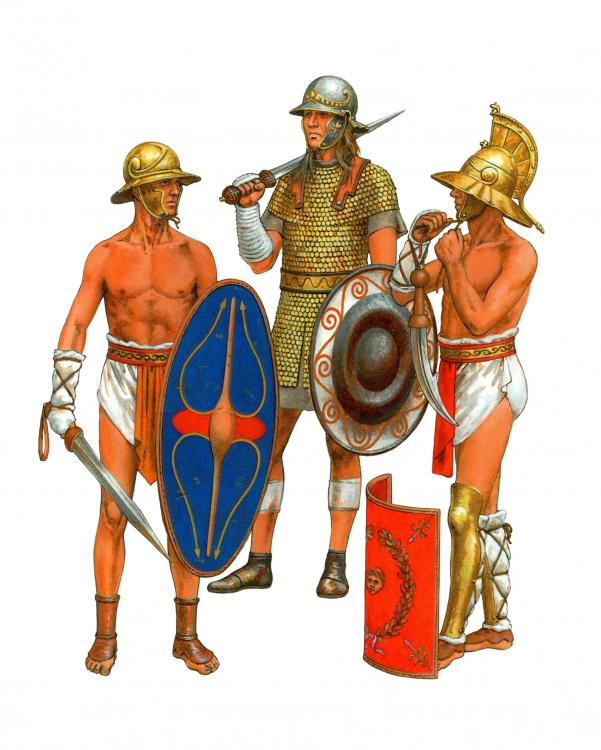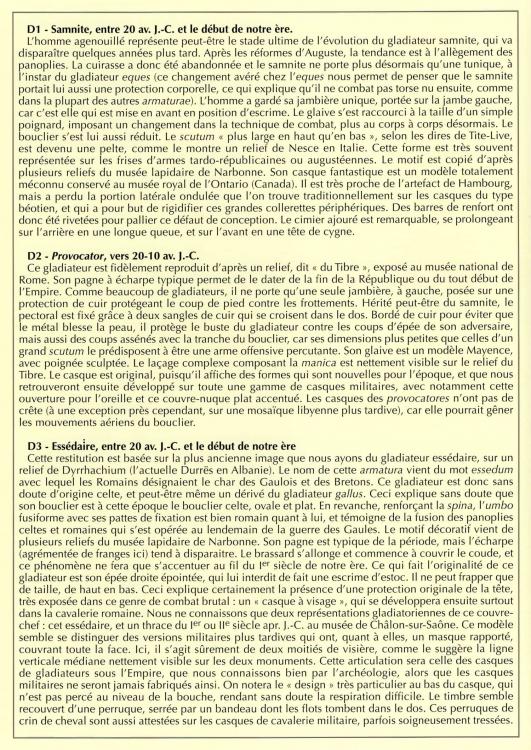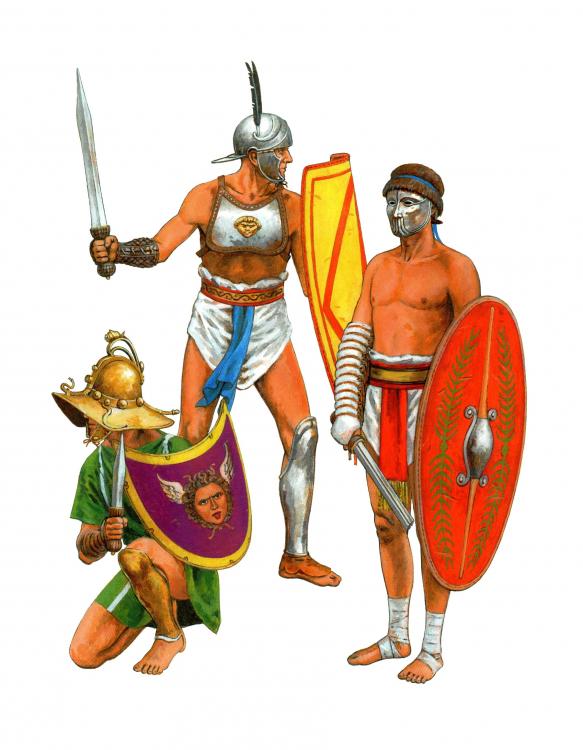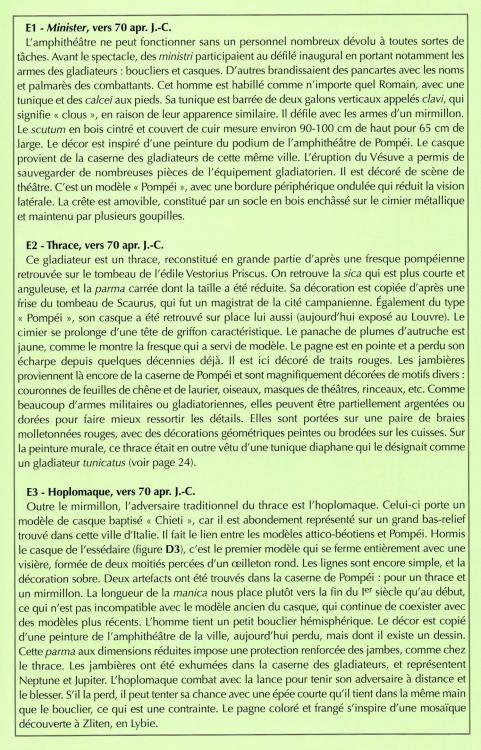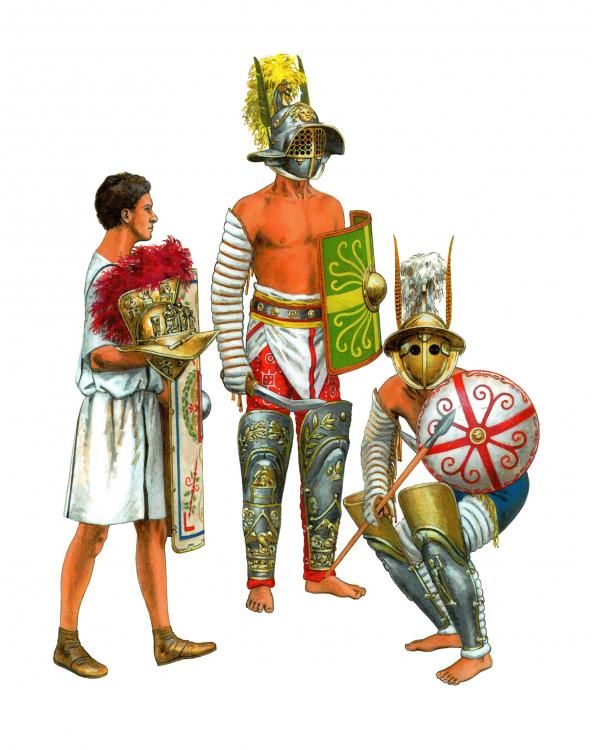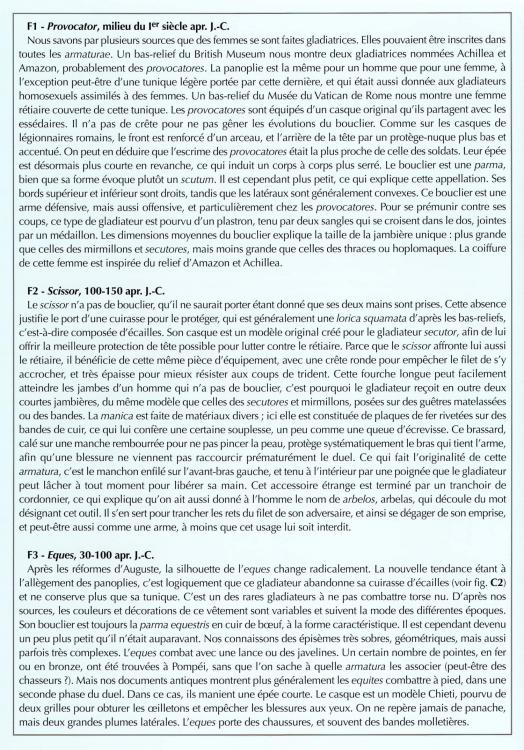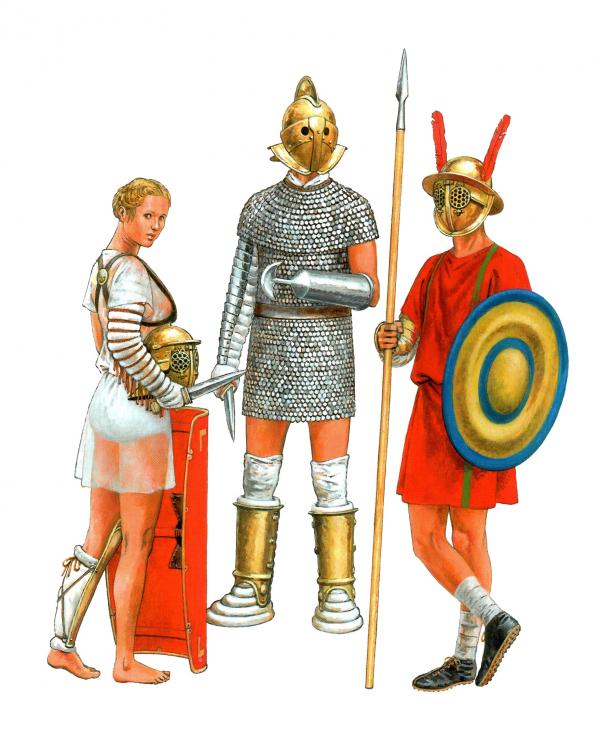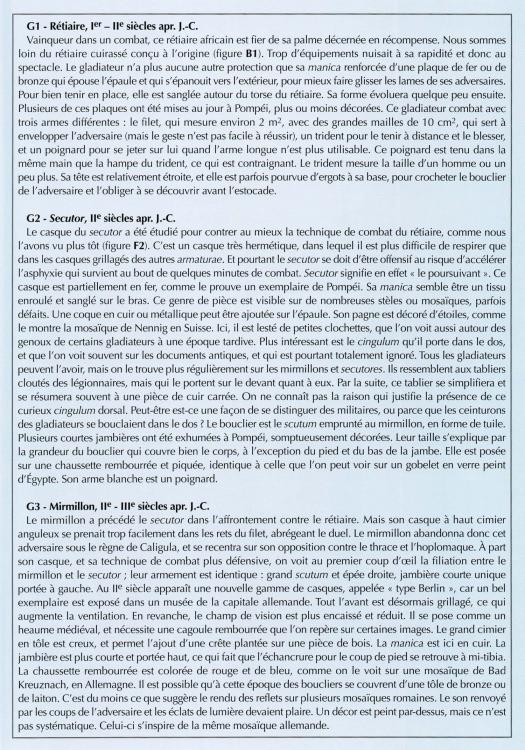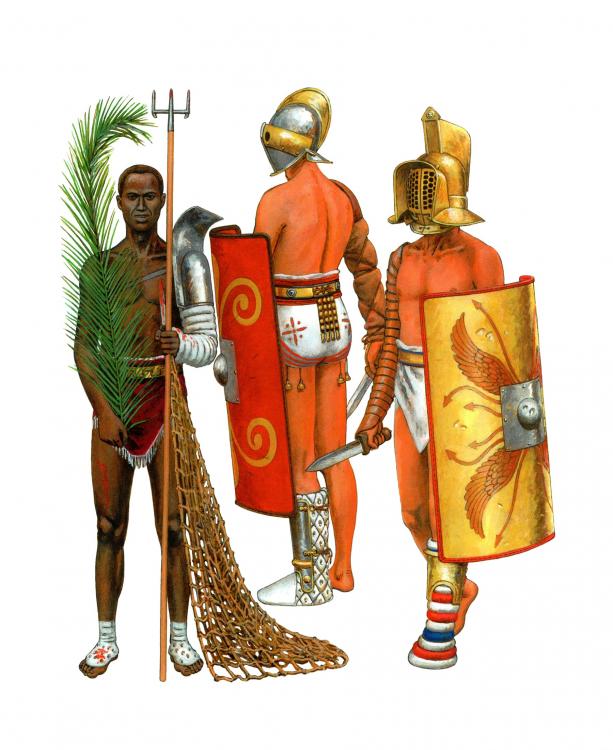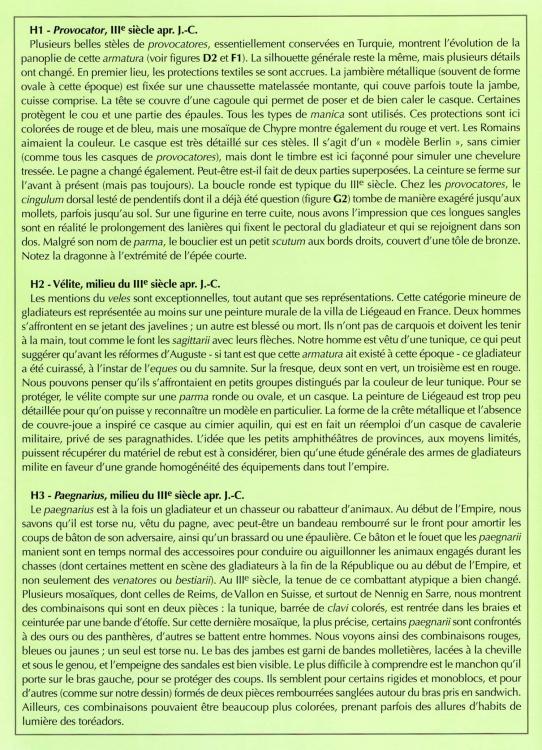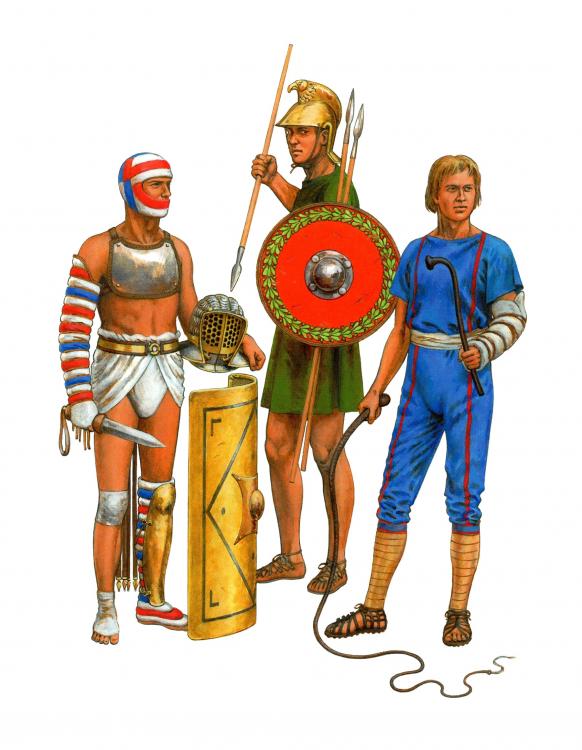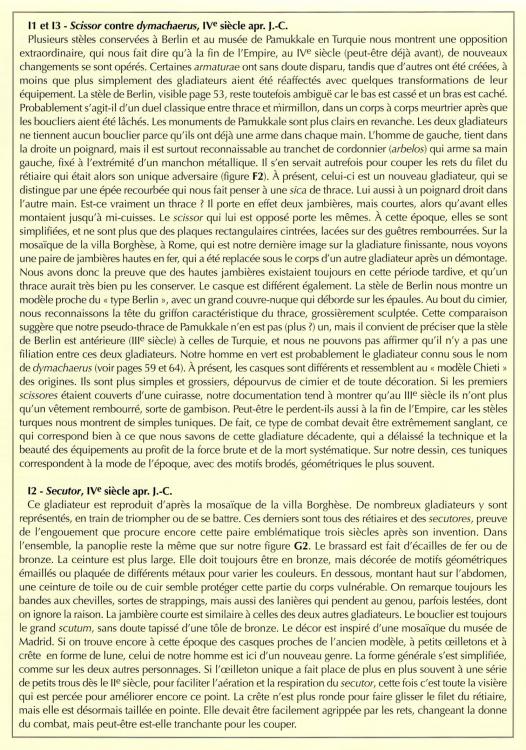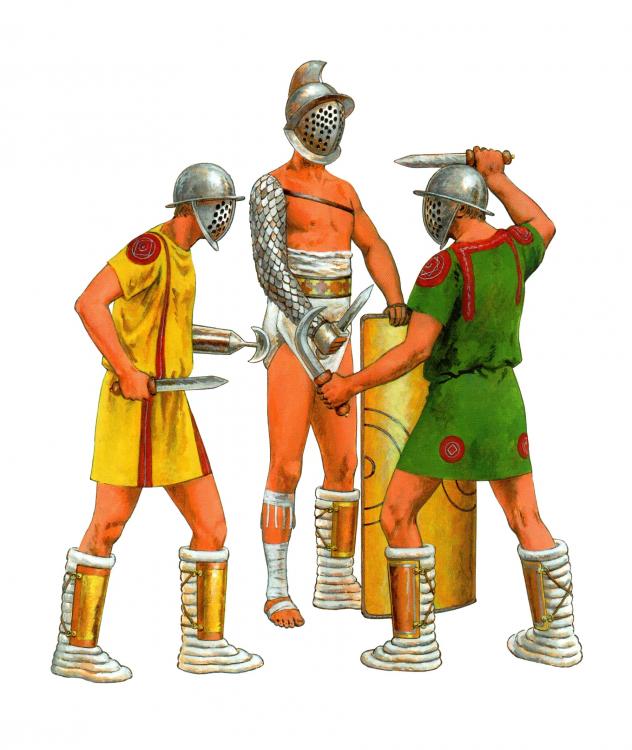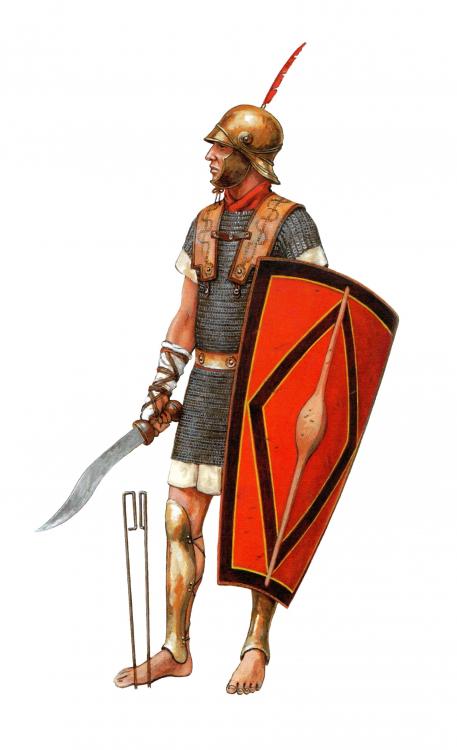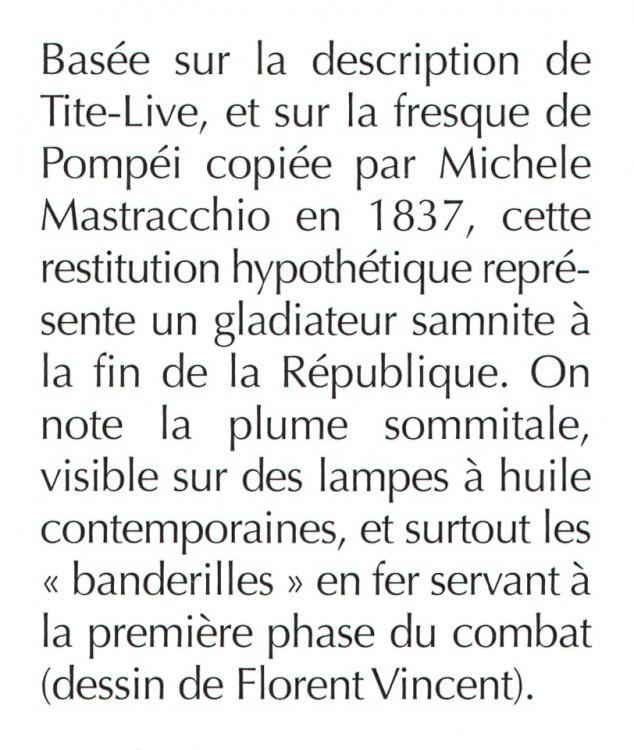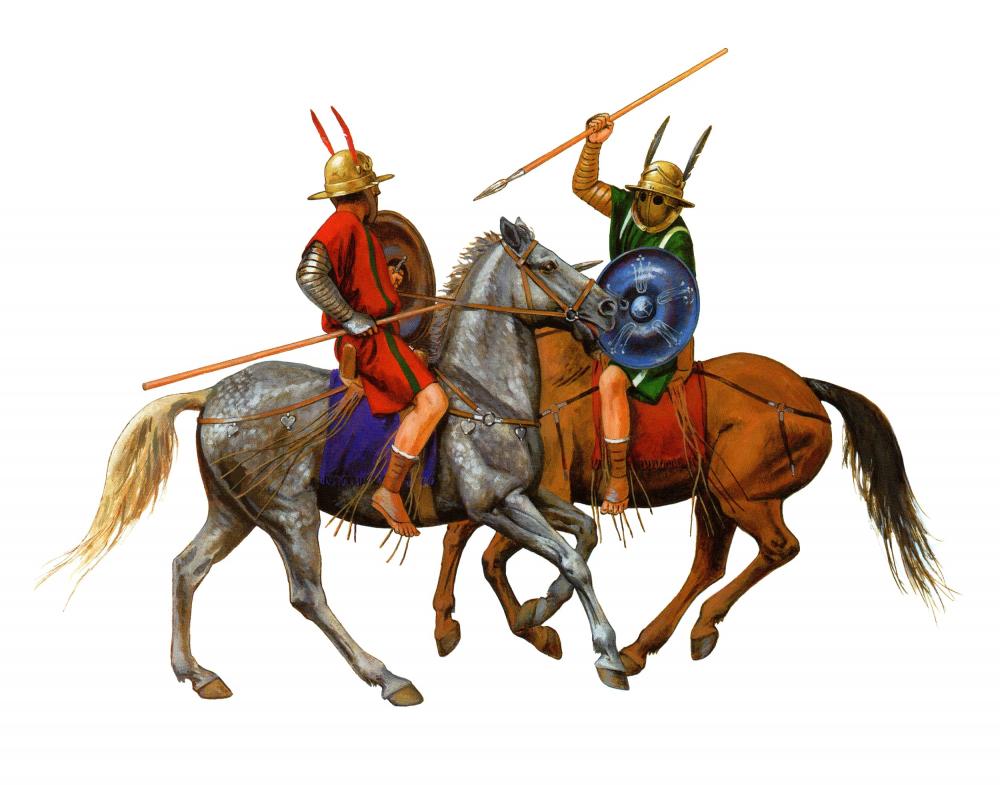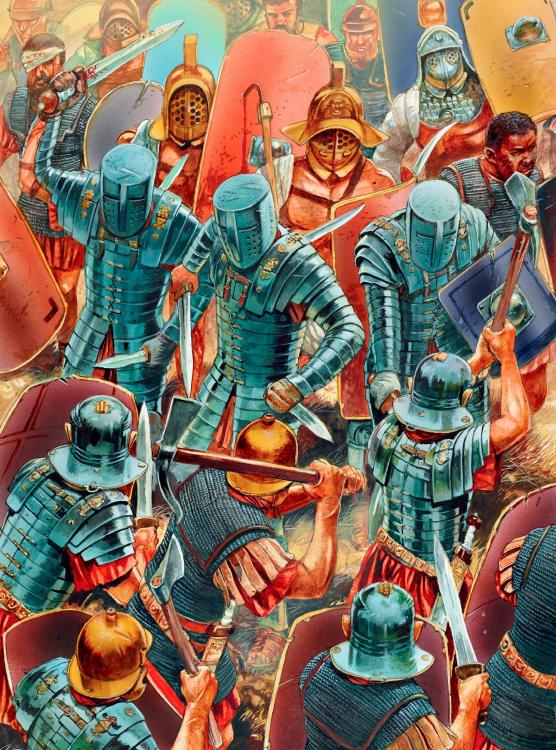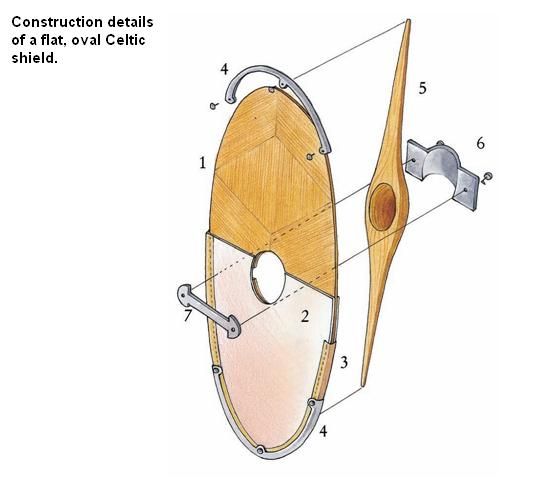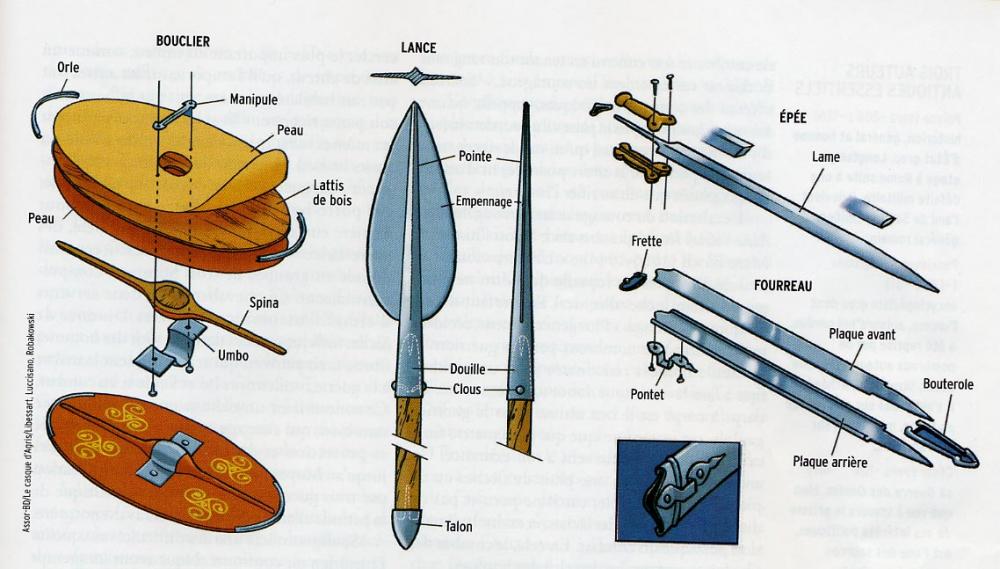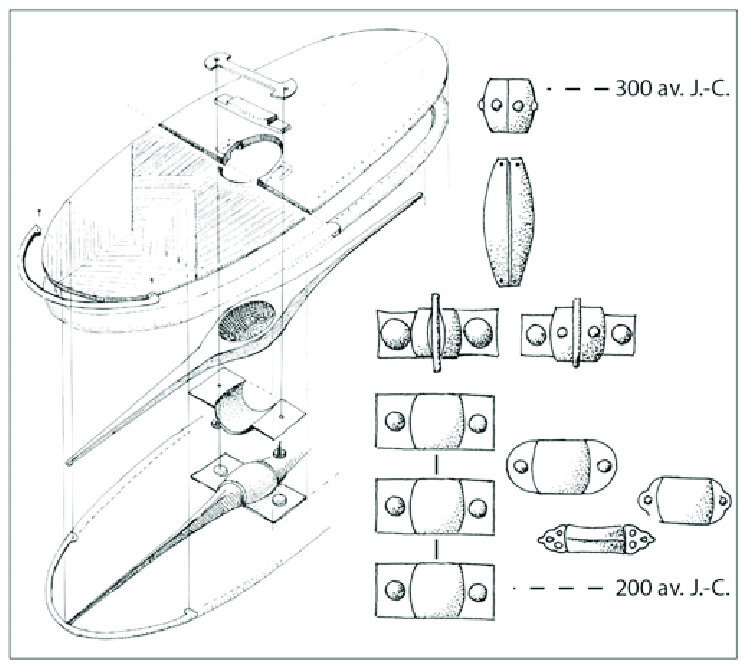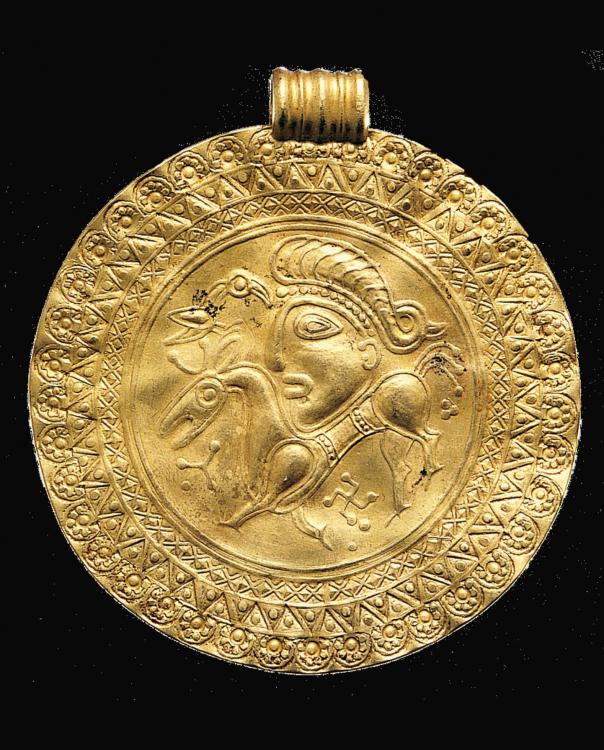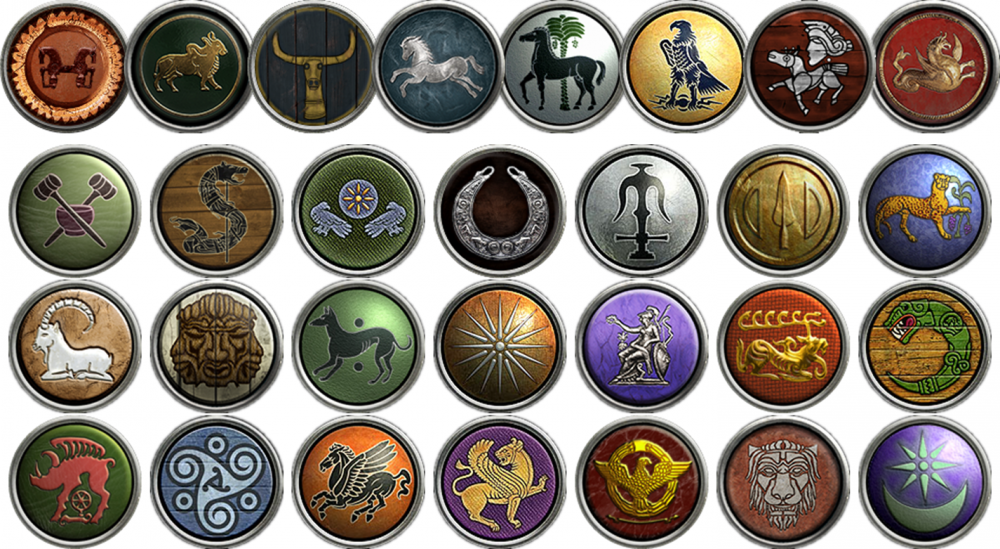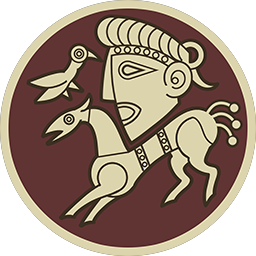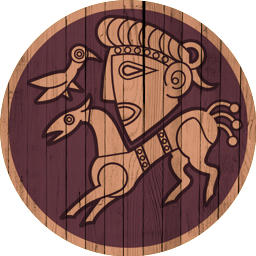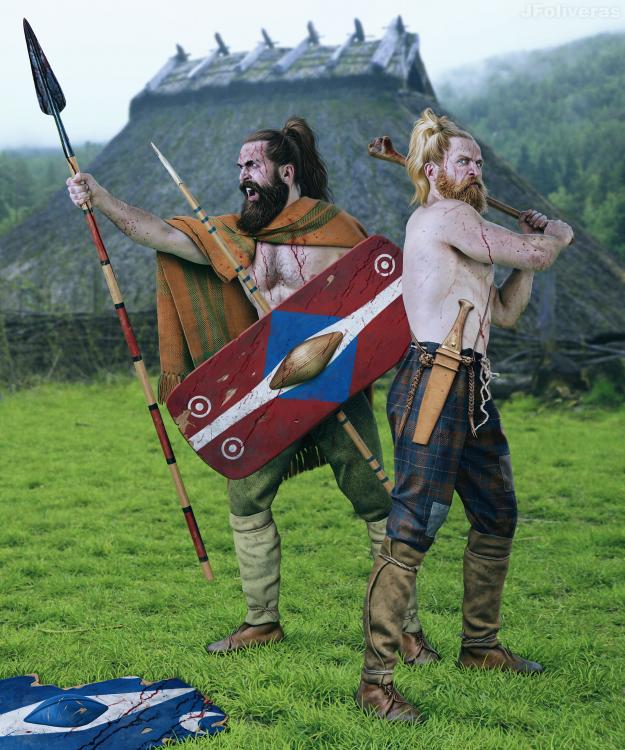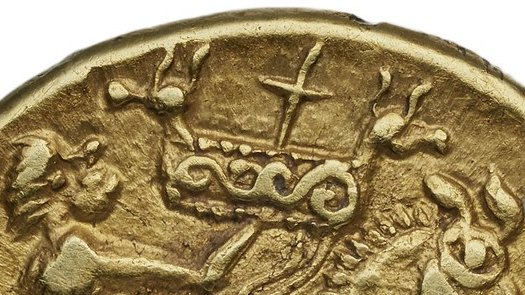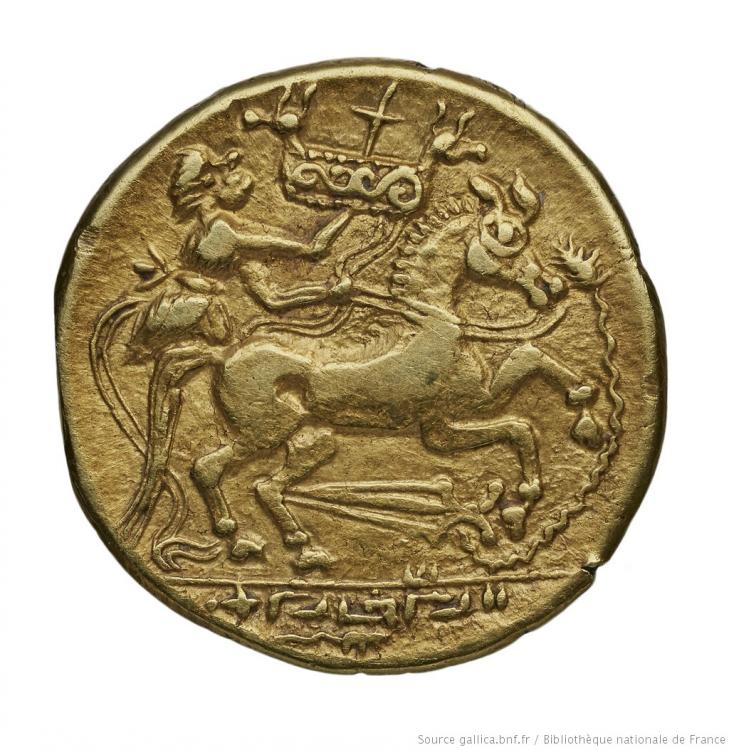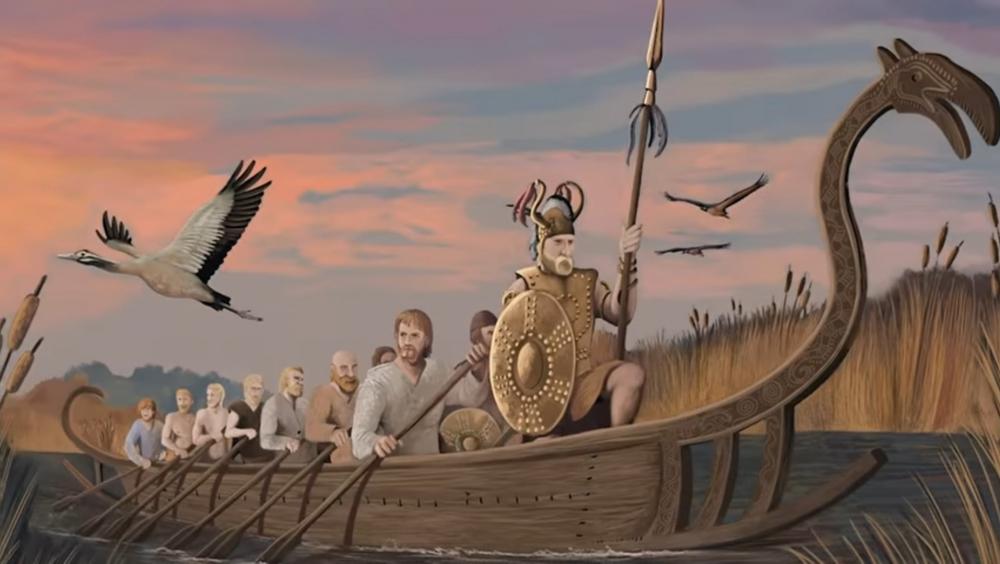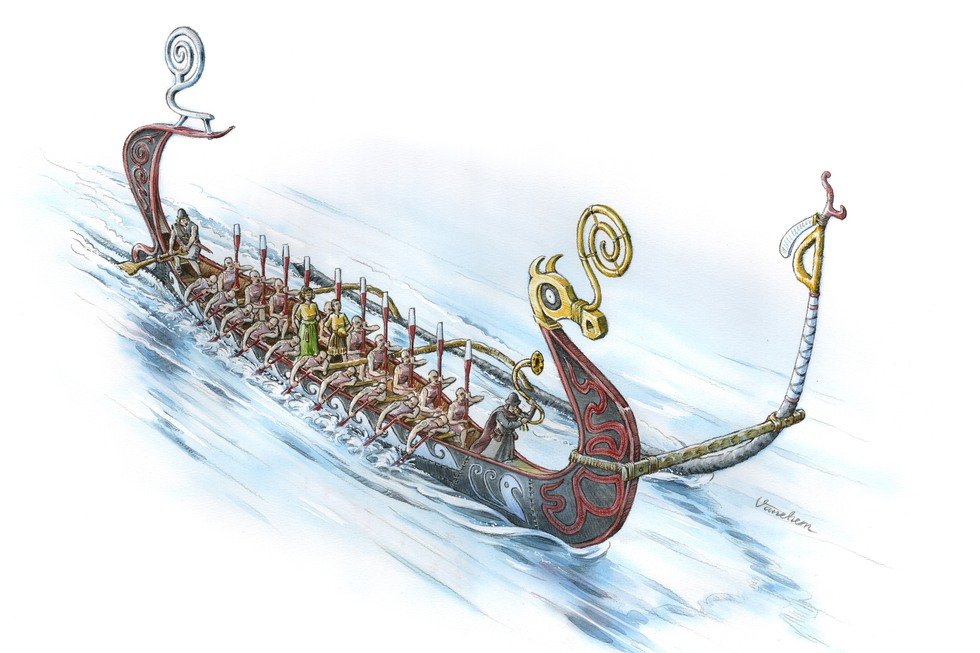-
Posts
2.379 -
Joined
-
Last visited
-
Days Won
80
Everything posted by Genava55
-
Gladiators have evolved considerably, and the ones we know best are from the imperial period. There are a few books on the subject: Plates and descriptions: Plates and descriptions: Plates and descriptions: Bonus: I hope you find it interesting
-
There is a dedicated thread for them:
-
@wowgetoffyourcellphone would be great for your Roman Principate civ in DE.
-
.thumb.jpg.b21ca1d0c15fb56b42c39b25a0a40815.jpg)
Civ: Germans (Cimbri, Suebians, Goths)
Genava55 replied to wowgetoffyourcellphone's topic in Delenda Est
-
.thumb.jpg.b21ca1d0c15fb56b42c39b25a0a40815.jpg)
Civ: Germans (Cimbri, Suebians, Goths)
Genava55 replied to wowgetoffyourcellphone's topic in Delenda Est
@Obskiuras has a point in the sense a shield generally requires some volume for the handle. -
.thumb.jpg.b21ca1d0c15fb56b42c39b25a0a40815.jpg)
Civ: Germans (Cimbri, Suebians, Goths)
Genava55 replied to wowgetoffyourcellphone's topic in Delenda Est
By the way the original: Edit: You can find more info there: https://gelmir.com/compendium_item/gold-bracteates/ -
.thumb.jpg.b21ca1d0c15fb56b42c39b25a0a40815.jpg)
Civ: Germans (Cimbri, Suebians, Goths)
Genava55 replied to wowgetoffyourcellphone's topic in Delenda Est
I understand but the idea from EBII was to make a speculative simpler interpretation of a later design, trying to fit it into their timeframe. Since the golden bracteates are generally from the migration period. It is from the Dejbjerg wagon. -
https://www.persee.fr/doc/paleo_0153-9345_1974_num_2_2_1057
-
The only way to test the GUI is to compile from a Git repo?
-
.thumb.jpg.b21ca1d0c15fb56b42c39b25a0a40815.jpg)
Civ: Germans (Cimbri, Suebians, Goths)
Genava55 replied to wowgetoffyourcellphone's topic in Delenda Est
By the way, Rome 2 Total War also got its inspiration from EBII for the Suebi Edit: you can find more info and images there: https://gelmir.com/compendium_item/gold-bracteates/ -
.thumb.jpg.b21ca1d0c15fb56b42c39b25a0a40815.jpg)
Archaeological potpourri
Genava55 replied to Gurken Khan's topic in Introductions & Off-Topic Discussion
https://www.labrujulaverde.com/en/2025/05/evidence-of-the-use-of-a-polybolos-the-mythical-greek-repeating-weapon-at-pompeii-in-89-bce-discovered/ Evidence of the Use of a Polybolos, the Mythical Greek Repeating Weapon, at Pompeii in 89 BCE Discovered A team of Italian researchers has discovered markings on the walls of Pompeii that could be the first known evidence of the use of an ancient and sophisticated weapon of war: the polybolos, a type of automatic crossbow capable of launching multiple arrows without needing to be reloaded, similar to modern machine guns. Its invention is attributed to Dionysius of Alexandria, a Greek engineer who worked in the arsenal of Rhodes in the 3rd century BCE. It wasn’t a crossbow in the traditional sense but used a torsion mechanism based on bundles of twisted sinew, and we only know about it from the description left by Philo of Byzantium, who wrote between 280 and 220 BCE. Philo recounts how one of these weapons was found and provided a detailed description of the gears that powered a chain drive to position bolt after bolt into its firing groove. This is the earliest known application of such a mechanism. The study published in the Nexus Network Journal focuses on a section of the northern wall of Pompeii near the gates of Vesuvius and Herculaneum, where the researchers, led by Adriana Rossi from the University of Campania, found and analyzed small holes in the stones. These marks are square or diamond-shaped and do not match the impact patterns of stones launched by conventional catapults. Instead, they appear to have been caused by arrows or metal projectiles. They appear in groups of four or five, as if the projectiles that caused them had been fired in bursts, something difficult to achieve with handheld weapons or traditional crossbows. The precision and frequency suggest the use of a repeating machine, the researchers assert, believing that they could be the work of a polybolos used during the siege of Pompeii in 89 BCE, when the troops of the Roman general Sulla conquered the city. Although no physical remains of the weapon have been found, the markings on the walls would match its historical description. To confirm their theory, the team used 3D scanning techniques and digital reconstructions. Through virtual models, they calculated the speed and force of the impacts, estimating that the arrows that could have made the marks reached a speed of around 109 meters per second, a rather surprising speed for the time. They also confirmed that the depth and shape of the holes matched models of Roman arrowheads kept in European museums. Why Shoot Arrows at the Walls? But why would the Roman army besieging the city have fired arrows at the stone walls instead of at the defenders? The researchers offer two fairly evident theories. The first is that they simply missed their shots—that is, they were aiming at soldiers on top of the wall but missed, perhaps because the weapon was hard to handle or simply wasn’t as effective as it should have been. And the second is that they were simply testing, practicing and calibrating the polybolos before using it against the enemy. In this regard, an episode of the popular show MythBusters aired in 2010 built and fine-tuned a replica of the polybolos based on Philo’s description, concluding that its existence as a historical weapon was plausible, despite being prone to constant mechanical failures. The team now plans to analyze more sections of the walls of Pompeii and collaborate with museums to cross-reference their findings. They also hope this discovery will attract interest to Pompeii not just as a city frozen in time, but also as a battlefield where Roman military engineering left its mark. SOURCES Rossi, A., Gonizzi Barsanti, S. & Bertacchi, S. Use of Polybolos on the City Walls of Ancient Pompeii: Assessment on the Anthropic Cavities. Nexus Netw J 27, 243–272 (2025). doi.org/10.1007/s00004-024-00803-x Reconstruction of a polybolos. Credit: Diels and Schramm 1919 / AR and archives of Archeotecnica / archeotecnica.com -
.thumb.jpg.b21ca1d0c15fb56b42c39b25a0a40815.jpg)
Archaeological potpourri
Genava55 replied to Gurken Khan's topic in Introductions & Off-Topic Discussion
-
Probably not, currently because 0 A.D. - Empires Ascendant is focusing on 500 BC - 1 BC. Have you watched the video? Nothing suggest a link to Marius. The first account of the Lanciarii is from the 1st century AD. By the way, the Marian reforms are the result of a misconception. Qualified scholars generally don't support the existence of a huge reform enacted by Marius.
-
.thumb.jpg.b21ca1d0c15fb56b42c39b25a0a40815.jpg)
Civ: Germans (Cimbri, Suebians, Goths)
Genava55 replied to wowgetoffyourcellphone's topic in Delenda Est
But it has to be consistent and coherent with other civilizations. Too often, there's the immature temptation to want to put everything in every new civ, and this quickly becomes absurd and unbalanced. The Kushites underwent a similar development. I think it is something to keep for a later version of the Germans. Currently, it is based on the Cimbri. When there will be the later Germans, we could add the Cherusci pikemen. But in the meantime, let's focus on the Cimbri. -
.thumb.jpg.b21ca1d0c15fb56b42c39b25a0a40815.jpg)
Civ: Germans (Cimbri, Suebians, Goths)
Genava55 replied to wowgetoffyourcellphone's topic in Delenda Est
Cimbri/Teutones/Ambrones raiders could work. Marauders too. Otherwise, axemen, clubmen... It is possible for some of them to have a bear skin as a cloak, just avoid the bear head. -
.thumb.jpg.b21ca1d0c15fb56b42c39b25a0a40815.jpg)
Civ: Germans (Cimbri, Suebians, Goths)
Genava55 replied to wowgetoffyourcellphone's topic in Delenda Est
I don't think there was a specific troop wearing wolf skin and wolf head. Tacitus, Cassius Dio and Caesar don't mention it. The only place with a depiction of a sort of warriors wearing such items is on the Trajan column, but it is unclear if those are Germans or not. Those men are Roman auxiliaries in full armor, while the actual Germans fighting in front of them with their native weapons are bareheaded. Furthermore the current design is focusing on the Cimbri and pre-roman period. The berserkir/ulfhednar is mostly attested during the viking and post-viking period, in the Norse mythology and Norse laws. And nothing suggest they were a specific battle unit. So for the moment, leave them aside. -
.thumb.jpg.b21ca1d0c15fb56b42c39b25a0a40815.jpg)
Civ: Germans (Cimbri, Suebians, Goths)
Genava55 replied to wowgetoffyourcellphone's topic in Delenda Est
So what's the plan about it? -
.thumb.jpg.b21ca1d0c15fb56b42c39b25a0a40815.jpg)
Civ: Germans (Cimbri, Suebians, Goths)
Genava55 replied to wowgetoffyourcellphone's topic in Delenda Est
Ok. I don't think a ramming ship is mandatory -
.thumb.jpg.b21ca1d0c15fb56b42c39b25a0a40815.jpg)
Civ: Germans (Cimbri, Suebians, Goths)
Genava55 replied to wowgetoffyourcellphone's topic in Delenda Est
If we accept the rock art is sufficient enough evidence, we must at least accept it is a minority of the boats. Most don't have sails. -
.thumb.jpg.b21ca1d0c15fb56b42c39b25a0a40815.jpg)
Civ: Germans (Cimbri, Suebians, Goths)
Genava55 replied to wowgetoffyourcellphone's topic in Delenda Est
Well done. If we want more color, we can also add a few shields on the sides. Maybe on both ends. -
.thumb.jpg.b21ca1d0c15fb56b42c39b25a0a40815.jpg)
===[TASK]=== 0 A.D Ships Update.
Genava55 replied to Alexandermb's topic in Eyecandy, custom projects and misc.
Hémistatère au « bateau glaive », série GRH 3f – classe III, groupe de Normandie (Calètes ?), 3e siècle av. J.-C. -
.thumb.jpg.b21ca1d0c15fb56b42c39b25a0a40815.jpg)
Civ: Germans (Cimbri, Suebians, Goths)
Genava55 replied to wowgetoffyourcellphone's topic in Delenda Est
Nydam boat also had a carved wooden beam: https://www.bricksite.com/nydam/nydam-boats https://boudicca.de/the-nydam-boat/ -
This is simply to emphasize, based on historical references from the time period, what I explained earlier. The most appropriate designation for a civilization of the same rank as the Gauls or Britons would be the 'Germans'.
-
.thumb.jpg.b21ca1d0c15fb56b42c39b25a0a40815.jpg)
Civ: Germans (Cimbri, Suebians, Goths)
Genava55 replied to wowgetoffyourcellphone's topic in Delenda Est
I'm no specialist, but it seems to me that it's extremely difficult to do both at the same time. Sail is not viewed as a supplemental propulsion, it is something used for long distance. My personal opinion is that Bronze Age and Iron Age warriors favored the mobility and portability of boats. It should not be forgotten that there are no indications that they had ports of any significant size. Maybe we can make an exception for the merchant ship, since it is a case really inappropriate for rowers. Maybe decorations or stempost size? Here a few ideas (the outrigger is maybe a bit excessive but why not): -
Caesar, book 1, ch. 1: Caesar, book 1, ch. 2: Caesar, book 6, ch. 24: Tacitus, Germania:

